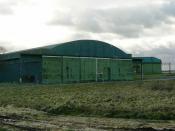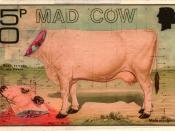Time to End Mad Cow.
One month ago, test results on the 12-year-old cow believed to be harboring BSE, also known as Mad Cow Disease, came back negative. As a result, fears of a U.S. mad cow outbreak were allayed.
However, that is no reason to feel confident about the American beef supply. According to the Organic Consumers Association, the United States Department of Agriculture has repeatedly failed to meet international standards set by the World Health Organization to increase cattle testing. The United States has a duty to protect the American public by meeting the World Health Organization's standards and thereby preventing a potential mad cow outbreak.
BSE reached epidemic status in Great Britain during the 1980s and 1990s, spurring the government to slaughter thousands of cattle. To cut costs, it was common practice for the British cattle industry to feed cattle remains to other cows.
As a result of this unnatural practice BSE developed. It was not until 1996, when teenagers in the UK started dying of the disease that the British government finally conceded that BSE-infected beef was the cause. Victims of the terrible disease saw a complete debilitation of all functions and faced death within six months. This would explain the inconclusive death count at 69, since the disease is often misdiagnosed with Alzheimer's and other brain diseases.
In 1997 the United States banned the practice of cow-to-cow feeding, which was believed to be the cause of BSE. Despite the 1997 ban, a loophole in this regulation allows for agribusiness to take the same cow feed and give it to other animals: generally pigs and chickens. The animals consume the possibly BSE-saturated feed, and when they are slaughtered, their waste is recycled back into the food chain and into the cattle's feed. These...


